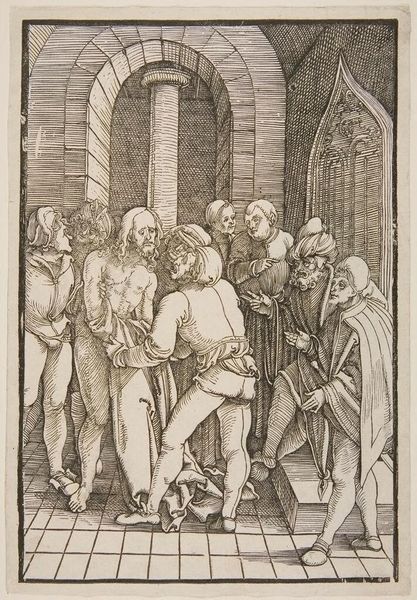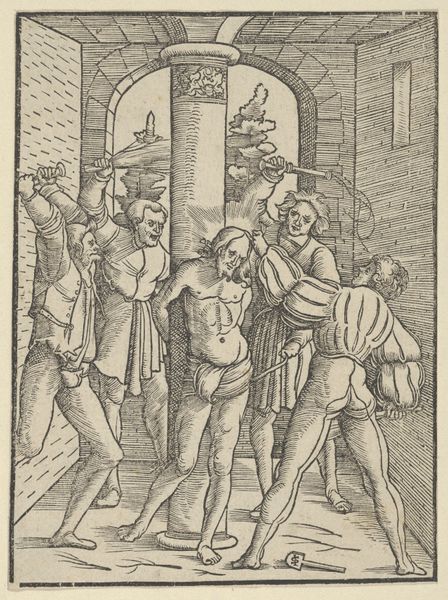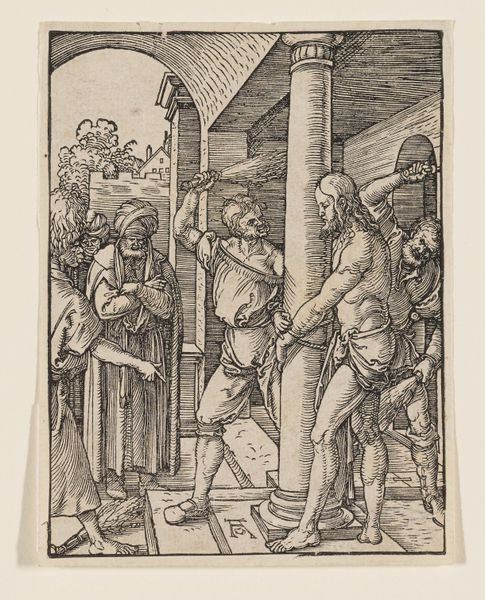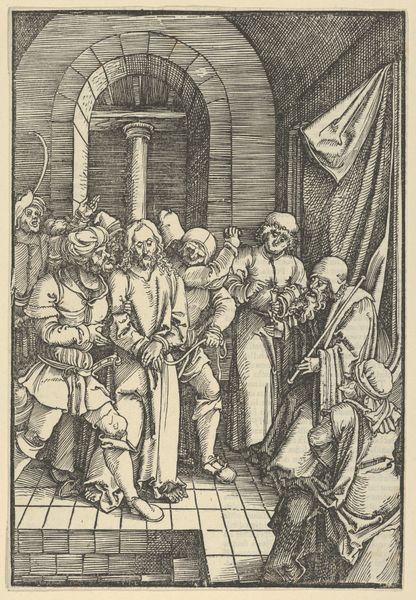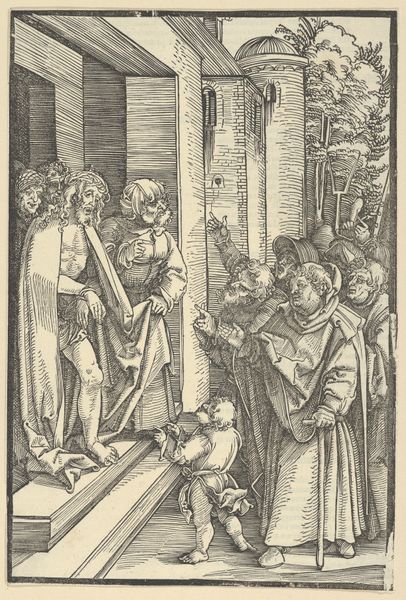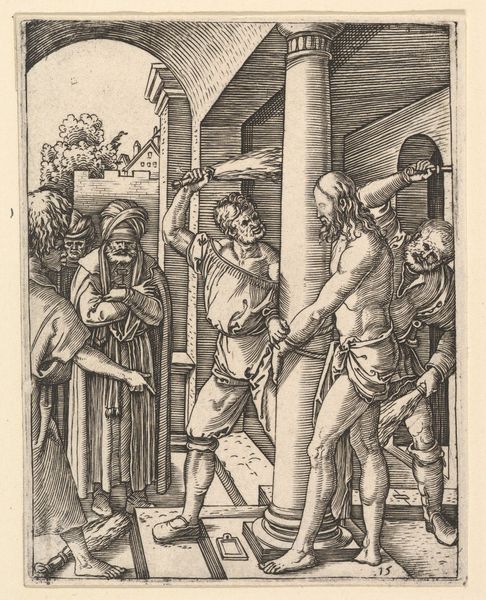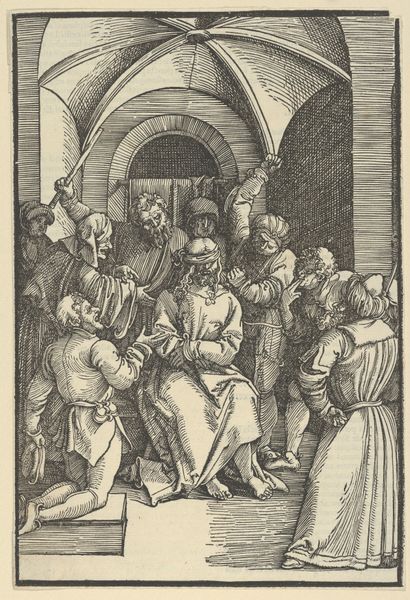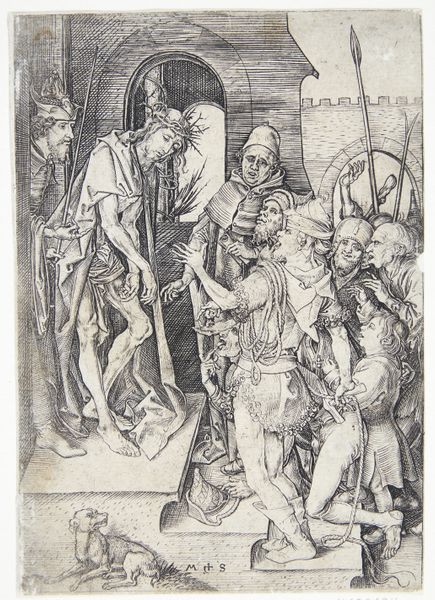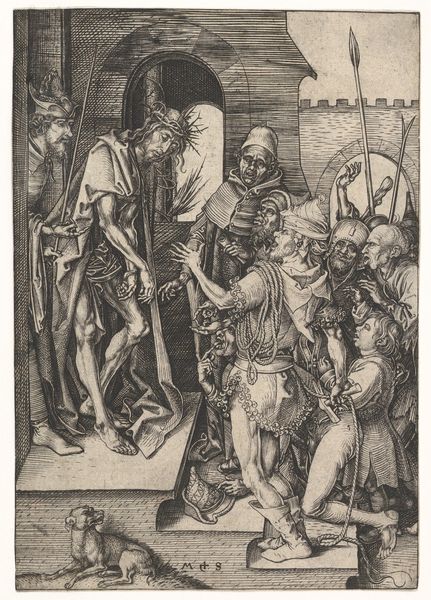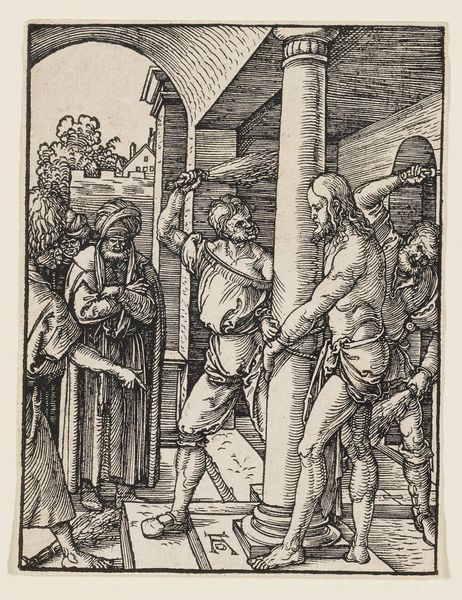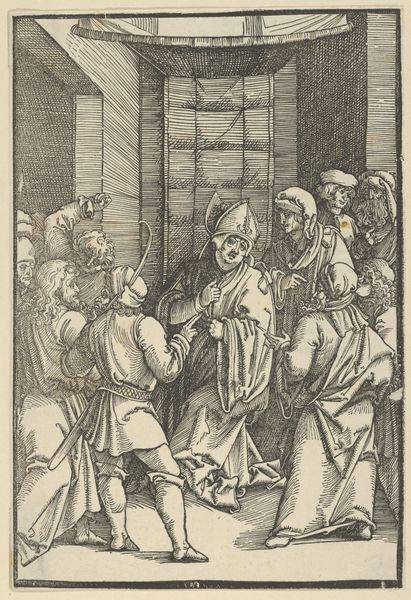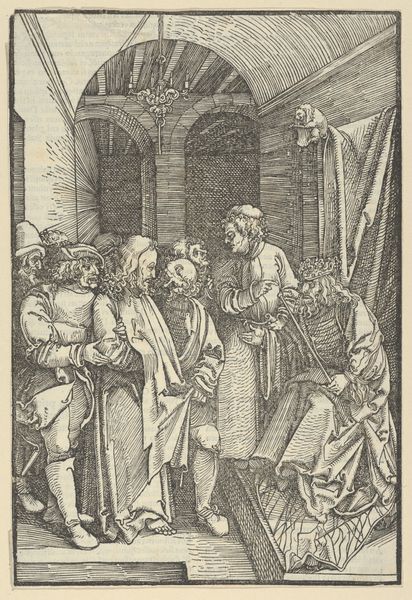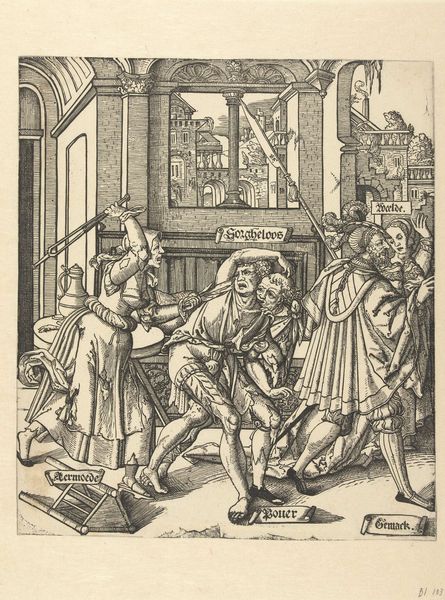
Christ Stripped, from Speculum passionis domini nostri Ihesu Christi 1507
0:00
0:00
drawing, print, woodcut
#
drawing
# print
#
pen illustration
#
figuration
#
woodcut
#
history-painting
#
northern-renaissance
#
christ
Dimensions: Sheet: 9 9/16 × 6 3/8 in. (24.3 × 16.2 cm)
Copyright: Public Domain
Curator: Before us stands "Christ Stripped," a woodcut created by Hans Schäufelein in 1507, part of the "Speculum passionis domini nostri Ihesu Christi" series. It's currently housed at the Metropolitan Museum of Art. Editor: My initial reaction is of a scene steeped in dread. The tight composition, with figures densely packed, heightens the feeling of confinement and vulnerability. Curator: Indeed. Schäufelein's choice of woodcut as a medium adds to that rawness. The stark contrast between light and shadow, achieved through precise cuts, intensifies the emotional impact of the scene, as does the pronounced linear quality that articulates all forms within the image. Editor: What is most striking is the architecture: notice the Romanesque and Gothic structural features like the arches which almost look like jail bars, especially when coupled with the men and Christ. Considering this, I find myself reflecting on how this image might function within a culture grappling with justice, authority, and the individual’s fate within those structures. Curator: Certainly, we can examine the semiotics in the gesture and costumes that indicate a clear hierarchy between Christ and his tormentors; consider the narrative elements that the work is also built on to tell its part in a broader social story. The expressions of those stripping Christ of his garments also tell a tale. Editor: Speaking of costumes, their texture, however rudimentary, highlights the almost unbearable contrast in texture and tension between Christ's exposed vulnerability and his oppressor's control. The way the composition centers on Christ forces the viewer to really internalize His experience. Curator: Absolutely. The visual language deployed, like in most Northern Renaissance prints, draws from established iconography. It guides the viewer to recognize Christ's suffering within the familiar narrative, reinforcing theological ideas while using stylistic qualities such as its use of lines and limited shades to affect the interpretation. Editor: Looking closely at Schäufelein’s compositional strategy and historical background, it reveals the profound interplay between art, devotion, and social critique in early 16th-century Europe. It has offered a complex reflection. Curator: Indeed. By attending to both form and historical setting, the print reminds us of how artworks condense many concerns and experiences within a particular moment.
Comments
No comments
Be the first to comment and join the conversation on the ultimate creative platform.
